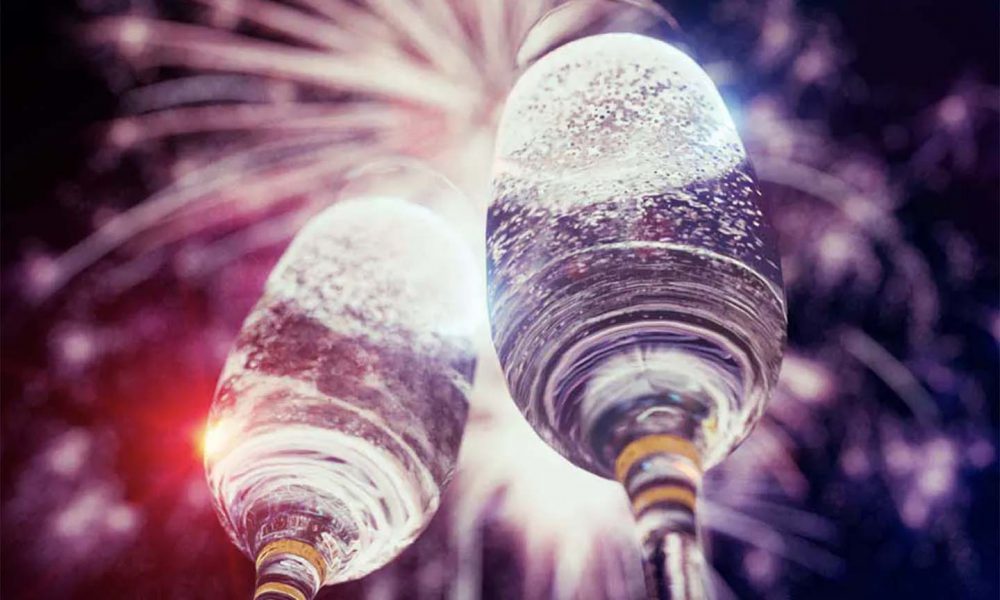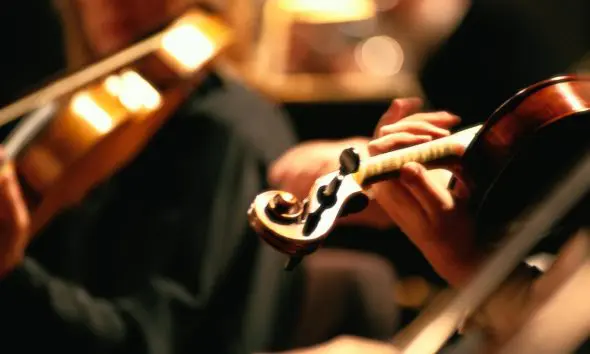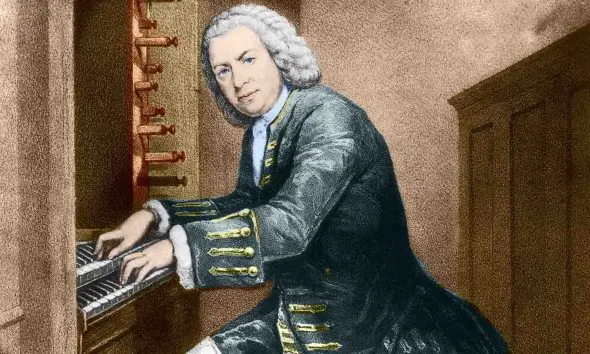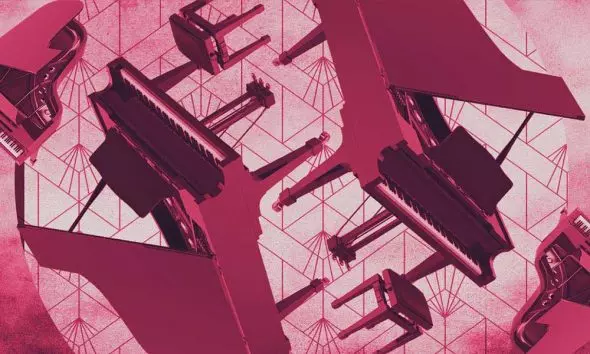Best Classical Music For New Year: Top 20 Pieces
Discover our selection of the best classical music for New Year featuring 20 pieces guaranteed to fill you with hope and optimism!

How will you spend New Year’s Day? Recovering from New Year’s Eve? Struggling to forego that celebratory glass of champagne when you’ve just resolved to give up booze? Or will you go for a long walk with family and friends? Do something new that you’ve never done before? Host a New Year drinks party? Or binge on that box set? Whatever you choose, these 20 pieces of music are guaranteed to lift the spirits, fill you with hope and optimism – and give you just the right kick-start for the year ahead. Scroll down to discover our selection of the best classical music for New Year.
20: Arne: ‘The Glittering Sun’ from The Morning
What better way to start the day than this beautiful greeting to ‘the glittering sun as it begins to rise and paints the sky’! It comes from the fifth of six brief cantatas by Thomas Arne (composer, of course, of Rule, Britannia!) composed in 1755 and using lines from Comus by John Milton.
19: CPE Bach:‘Magnificat Anima Mea’ from Magnificat in D Major
The opening chorus of this magnificent setting of the Magnificat in D Major Wq 215/H.772, composed in 1749, could have been placed at Number One or anywhere else in the Top Twenty, it is such a life-affirming piece. But why not start the New Year in the way you intend to continue!
18: Grison: Toccata in F
Here is a little-known composer with an exuberant toccata that deserves to be heard far more often, the kind of piece that will fill you with optimism and put a spring in your step. Jules Grison (1842-96) studied with Étienne Robert (1816-96), the organist of Rheims cathedral, and succeeded him at the age of 21, a post he held until his death. Hear it in this superb performance by the late Jane Parker-Smith.
17: Stanley: Trumpet Tune in D, Op. 6 No. 5
Stanley (1712-86), blinded by an accident at the age of two, was one of the greatest organists of his day, a friend of Handel and Master of the King’s Band of Music. Among his 30 voluntaries for organ, published in the 1740s and ‘50s, is this one which exploits the trumpet stop and is a great favorite at weddings.
16: Elgar: Scene 6 (finale) from Caractacus
Not one of Elgar’s best-known works, this cantata in six scenes – it was first performed in 1898 – tells the story of a British chieftain who fought the Roman invaders. Eventually defeated at the British Camp on the Malvern Hills, Caractacus was taken to Rome for trial but so impressed Emperor Claudius that he was pardoned. The final scene is one of the composer’s most rousing, patriotic choruses. To be played at full volume!
15: J Strauss II: Champagne Polka
Champagne on New Year’s Day? Yes, please! And we must have some music by Johann Strauss, without which no New Year’s Day would be complete. This polka, subtitled ‘a musical joke’, complete with the popping of corks, was written in 1858 for Strauss’s successful tour of Russia and is one of the best pieces of classical music for New Year. The music makes reference to a popular tavern song by János Fusz called ‘Mir is’ Alles Ans’ – ‘What do I Care.’
14: Dove: Ring Out Wild Bells
Tennyson’s poem Ring Out Wild Bells, written in 1850 (the same year that he was made Poet Laureate), has been set to music by many composers. This one is by the British composer Jonathan Dove CBE, written in 2000, and which has rapidly become a favorite choral item. He uses the first, second, third, fifth, and seventh stanzas for the seventh and final movement of his Passing of the Year song cycle written for double chorus and piano.
13: Puccini: Turandot (finale)
This great opera, composed in the last year of Puccini’s life (1924), is best known for the tenor solo in Act 3 ‘Nessun Dorma’ (‘None shall sleep’) made famous the world over by Luciano Pavarotti. But spool forward to the end of the opera (Act 3, Scene 2), and you will find this overwhelming choral version of the same theme. ‘Diecimila anni al nostro Imperatore!’ is guaranteed to send a shiver down the spine.
12: J Strauss I: Radetzky March
This is the piece that always ends the Vienna New Year’s Day Concert accompanied by the audience clapping (roughly) in time. It’s by far the best-known of all the compositions by the father of Johann Strauss II, a march written to celebrate the victory over the Italians by the Austrian general Count Joseph Radetzky von Radetz (1766-1858), and one of the best pieces of classical music to celebrate New Year.
11: Haydn:‘In the Beginning’ (from The Creation)
The second number in this vast, sprawling choral work (1796-98) begins with a solemn bass solo setting of the first words of the Book of Genesis, which, with excerpts from Milton’s Paradise Lost, provided Haydn with the text. The oratorio’s subject is that of chaos being resolved into order, of darkness turning into light. After the bass solo, the chorus enters for the magical moment when they sing ‘And there was light!’
10: Handel: Music for the Royal Fireworks
King George II commissioned Handel to write a suite of celebratory music to be played al fresco as part of a huge entertainment in Green Park, London, on April 27, 1749. The firework display was not a complete success – a Catherine wheel ignited the specially-built Temple of Peace and caused total panic – but the music was a triumph.
9: Waldteufel: The Skaters Waltz
Émile Waldteufel (1837-1915) – a French composer, despite his German-sounding name – spent much of his life in Paris, winning worldwide fame for his dance music. No doubt inspired by the fact that the Seine regularly froze over in the late 1870s and early 1880s, Les Patineurs (The Skaters Waltz) is his most widely-known work, though it did not become an international success until the 1920s.
8: Bach: ‘Osanna in Excelsis’ from Mass in B minor
The B minor Mass, one of the greatest of all choral works, was never heard in Bach’s lifetime. In fact, it did not receive its premiere until 1834 (in Berlin), 84 years after his death. Composed between 1733 and 1738, it is a tribute to Bach’s profound faith that, as a Protestant, he made a setting of a Catholic ritual. The awe-inspiring chorus of Osanna opens Part IV.
7: Mozart: Concerto for Two Pianos (finale), K365
This exuberant work was composed in 1779 for Mozart and his sister Nannerl “for home use.” Outwardly, the last movement is a joyous, bubbling romp, but there are many tricky moments to overcome in performance which Mozart must have included with a nod and a wink.
6: Coates: London Suite
Let me take you to London – to Knightsbridge, Covent Garden, and beyond – for the New Year sales! Eric Coates wrote this three-movement suite in 1932, and it has become one of the most popular pieces of British light music ever written. His later London Again Suite portrays Oxford Street, Langham Place, and Mayfair.
5: Brahms: Violin Concerto
Brahms composed just one concerto for the violin and, in so doing, produced one of the great masterpieces for the instrument, “a song for violin on a symphonic scale,” as one writer put it. Every famous violinist has the work in their repertoire. The first to play it was Brahms’s friend and adviser Joseph Joachim, who gave the first performance on New Year’s Day 1879.
4: Fletcher: Ring Out Wild Bells
Here is another setting of Ring Out, Wild Bells, from In Memoriam by Alfred Lord Tennyson. It is by Percy Fletcher (1879-1932), a British composer best known for his brass band and military music. And it is one of the most effective, especially in this spine-tingling performance by the Black Dyke Mills Band, the Huddersfield Choral Society conducted by Roy Newsome.
3: Hummel: Trumpet Concerto
Hummel, a pupil of Mozart and Albrechtsberger, also studied for a time with Haydn. In 1803 he wrote this Trumpet Concerto for the same virtuoso, Anton Weidlnger, for whom Haydn had earlier written his trumpet concerto. Hummel took over from Haydn as Kapellmesiter to the Einstadt court on New Year’s Day 1804, the day that Weidlinger gave the first performance of this brilliant work.
2: J Strauss II: The Blue Danube
Every New Year collection must include this, the most famous waltz ever written, always the penultimate piece played in the popular New Year’s Day concert from Vienna’s Musikverein. An der schönen, blauen Donau (to give it its proper title), one of the best pieces of classical music to celebrate New Year, was originally a choral work written for the Vienna Men’s Singing Society in 1867. Today, in its purely orchestral guise, it is Austria’s second national anthem.
1: Tomlinson: Fantasia on Auld Lang Syne
Robert Burns’s poem and New Year’s Eve are as inseparable as Rolls and Royce, Gilbert and Sullivan or Marks and Spencer. Burns wrote it in 1788 though it is based on an older Scottish folk song. The music? That’s less straightforward. Its original composer remains a moot point with various contesting claimants. There’s no puzzle, though, about the origins of this witty 20-minute fantasy using the tune. It was composed in 1976 by the Lancashire-born Ernest Tomlinson (1924-2015), one of the country’s great light music composers. It is, musically speaking, a quodlibet – that is a composition that combines several different melodies in counterpoint, usually in a light-hearted manner. It is said that Tomlinson includes in the score no less than 152 references to other popular and classical works! How many can you spot?






